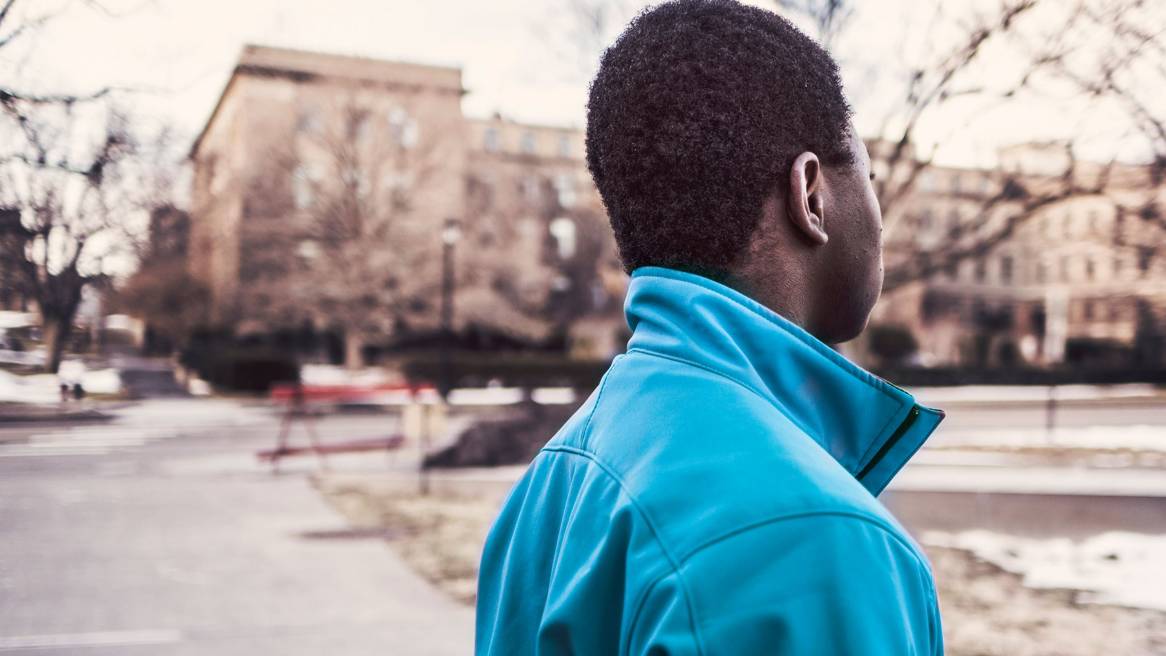Clintondale HS: Rethinking the Classroom
There is no hope for your students.
High school principals are used to criticism, but for Greg Green, principal at Clintondale High School in suburban Detroit, Mich., that assessment by an educational consultant hit hard.
The school’s problems were clear. Debt: $5 million. A majority of its 525 students considered at-risk. An outside evaluation that ranked Clintondale’s technology infrastructure 542nd out of 560. Student skill levels were all over the map. Failure rates, Green says, were “through the roof.”
The consultants had no clear solution, and Clintondale could have easily become another tough-luck story of not enough money, a challenging student population and extenuating circumstances. Instead, the consultant’s criticism marked a turning point for Green and Clintondale. “When they said that about our school, we drew the line right then.”
Less than three years later, with minimal expenditure and creative approaches to learning and the places where it occurs, there’s renewed hope at Clintondale. Student failure rates have plummeted. Grades and statewide test scores are up.
Upending the School
The turnaround started when Clintondale reversed the teaching and learning process, or “flipped” the school. In this model, teachers use laptops to record lectures on video and post them to the school’s website, YouTube and other outlets. Students can watch the videos after school at home, in the school computer lab, on a smart phone—how and where it’s most convenient for them. The next day in the classroom, building on the material they studied, students work on math problems, write essays, build science projects, etc. Teachers are at their side, coaching, answering questions.
If the approach seems counter to what schools and students have practiced for decades, Green says it’s about time. “Look at the usual process in schools. Kids listen to lectures, then they go home. Where’s the assistance at home? Sitting at their kitchen table, who’s going to help them with advanced algebra, physics, chemistry? The parent hasn’t been in the classroom in 30 years. They could be a physicist but they still don’t know what the teacher wants the student to get out of the material.”
The flipped model allows students to seek one-on-one help from their teacher when they have a question and learn in an environment conducive to education. “We have experts in the classroom, social workers, assistant principals, technology, all kinds of resources. So why keep sending the homework home where those resources are absent? Why not just reverse the process?”
I think you learn better with a better environment. I’m definitely more alert
Isaiah
in this classroom.
Rethinking the Classroom
Flipping a school causes teachers to rethink classroom procedures and pedagogies. Since lectures are on video, more class time involves collaborative work between students and teachers, students and peers. Clintondale worked with Steelcase Education professionals to explore how space can support a more active learning approach.
“Active learning is where students construct meaning by making their own discoveries. They don’t just sit back and listen to a teacher lecture all the time,” says Aileen Strickland, Steelcase design researcher. “They’re more engaged in learning, frequently working in groups and interacting with peers. When students can move around, relationships are more dynamic, so furniture and space that supports a more active approach can help teachers and students adapt to these new methods.”
Working with Steelcase, Clintondale transformed a classroom into a model for active learning. Out went old-style heavy metal student desks; in came lightweight Verb® tables with lockable casters and mobile Node® student chairs with flexible, swivel seats. Now students can easily shift between discussion, group work, working with another student or the teacher, test mode, or any other set-up. The room also includes a three-person lounge, ottomans, and individual and small group tables for brainstorming and sharing. There’s also a stool-height table and chairs for team collaboration or individual work.
In moments the classroom can shift to the layout that works best for students, teachers, and the material at hand. “We’ve identified nine different ways to set up the furniture in the classroom so far, and there’s probably more setups we’ll create. Students simply rolls things around, reconfigure, and in two to three minutes they’re back on task,” says social studies teacher Michael Ward.
He believes the flipped model, a classroom built for active learning and the flexibility he has to adopt new pedagogies provide major advantages. “You can put 185 lectures on video, enough for the entire year, but that doesn’t replace the teacher. What it does is let students watch the video when they want, rewind it as many times as they need and review particular points at their own pace. Once the students get that content, they come in here and we can teach to a higher level.
“We’re embedding new skills in students, teaching them how to solve problems, to be more creative, to collaborate with others. This room has allowed us to teach to best practices and to explore new frontiers.”
It takes time for a school to adopt active learning. “It’s a gradual process, and it requires some training for both teachers and students,” says Strickland. “It involves not only learning new pedagogies but also how space impacts learning, and how different pedagogies are best supported with different spaces and furniture.”
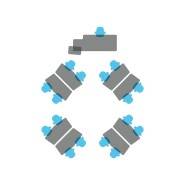 |
peer-to-peer + group |
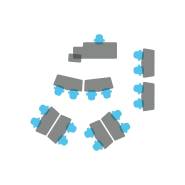 |
personalized learning |
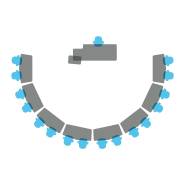 |
in-class lecture + review |
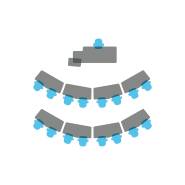 |
discussion + presentation |
Modest Investments, Major Returns
Even teachers at Clintondale without active learning furniture are using spaces differently. One instructor removed the teacher’s desk from his classroom, saying he doesn’t need it since he spends his time coaching and helping students one-on-one and in small groups. Another teacher uses a half-round table instead of a traditional hulking steel desk. He prefers the table because everyone can share material easier and he can work closer with students than from behind a desk.
Clintondale also rethought their 1950s vintage library, outfitting it with small tables, easy-to-move chairs and lounge seating. It’s now a hub for class break-out sessions and group projects. Students also use the library for individual work, including watching videos on course material.
“Just introducing the new furniture made a difference. One student said, ‘We’ve never gotten anything new before.’ They got the message that the school is investing in them, so they should invest themselves in their education, too. It’s a kind of a reciprocal agreement,” says Ward.
Since the consultant’s stinging assessment three years ago, Clintondale has experienced remarkable success. The ninth grade, the first to be flipped, saw the student failure rate drop by 33 percent in one year. Since September 2011, when the entire school began using the flipped model, the overall failure rate at the school has fallen to 11 percent. Student grades are up, as are statewide test scores.
Other schools have taken notice. Educators from around the world—over 300 at last count— have visited Clintondale to see what’s going on. Reporters from national, regional and industry media outlets are constantly calling.
For Principal Green, the greatest satisfaction is restoring hope for his students. “There was a national survey of nearly 500,000 students that showed that only one out of two students was hopeful. That’s alarming!
“But educators can change this. We don’t need to eliminate lectures, just offer them where students can review the material at their own pace. Classrooms can support active learning, with the experts and the resources and tools right there.
“Look at the results for our kids, who come from tough situations. We’re creating more hope for them. Ninety percent are graduating. Eighty percent are going to college. Most of these kids are the first to graduate from high school in their family. This is how we can create hope, right here in our schools.”
I’m improving my grades a lot. I can work better in this classroom.
Brianna
Mastering the Mix: Technology, Space, and Learning
Clintondale High School’s flipped model shows how blended learning (part online, part in-classroom) can reshape the learning process. From online courses to videoconferencing and interactive whiteboards in classrooms, the possibilities are changing every level of education. Steelcase Education researchers recently completed an in-depth design research study to better understand this trend and how educators might rethink how they can best leverage space and technology to improve the learning process. Their six research insights:
- Person-to-person connections remain essential for successful learning.
- Technology is supporting richer face-to-face interactions and higher-level cognitive learning.
- Integrating technology into classrooms mandates flexibility and activity-based space planning.
- Spatial boundaries are loosening.
- Spaces must be designed to capture and stream information.
- High-tech and low-tech will coexist.
The researchers conclude that classrooms and informal learning spaces must be highly flexible to support the new learning behaviors that are the direct result of new technologies.

